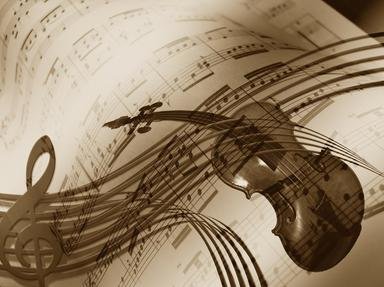Quiz Answer Key and Fun Facts
1. What notes are played on the open strings of a violin, from the lowest to the highest string?
2. The part of the bow where the violinist grasps it is called what?
3. Violin strings can be made of all of the following except what?
4. Where is the soundpost located?
5. Which statement is true about rosin?
6. What do you call it when you bounce the bow off the strings for each note?
7. What is the opposite of "pizzicato"?
8. What would you do if your music was marked "con sordini"?
9. Which of these keys is the hardest to play on the violin, because of the number of sharps?
10. What note is produced when you place a finger lightly a perfect fourth above the note that you are holding down?
Source: Author
violin34
This quiz was reviewed by FunTrivia editor
ertrum before going online.
Any errors found in FunTrivia content are routinely corrected through our feedback system.

